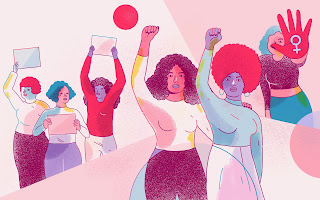Relationship between Fashion & Feminism
The struggle to convince society that many of the things women do have economic meaning, has been a long one and even when they have been acknowledged as having some economic value, the social value is still missing. The status accorded to some types of work isn’t always linked to money but on what that work actually is, says Manjima Bhaattacharjya. Treating and viewing the women who perform that work in a not-so-respectful manner. The world of fashion in India shows us the work of models, and the difficulties it entails, to the fundamental question of whether fashion objectifies women or acknowledges their agency.
You could see clearly how time has changed the industry for example the story of Meera in the 1970s, participating in the pageantry was looked upon as taboo, she felt working in the industry pioneering because during that time it was believed that girls from good homes never really went all out like that and did those things. When she won Miss India she was awarded things that would make her a good wife, a good homemaker like a sewing machine, a fridge. If I am talking about changes, women these days are awarded job opportunities, they are given contracts, things which will allow them to earn and put them par with men. People had absolutely no good things to say about models. And an occupation like modelling, keyword being occupation as this work sometimes isn’t viewed as work at all which involves presenting oneself publicly in a desirable or sexy way, becomes even more devalued and stigmatized. All interactions are filtered through a moral and judgemental lens Sometimes, the sexual subjectivity they face over the years has turned into a tendency to make independent sexual choices in their personal lives. The stigma however cannot be removed surgically due to this it had led these women to have a very ambiguous relationship with their work.
Written by: Shifra Bhorapkar




Comments
Post a Comment